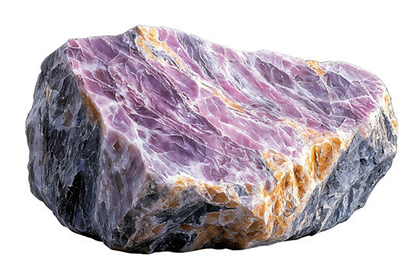3 Types of Lithium Ore Flotation Collectors
 Shirley
Shirley
 Feb 28, 2023
Feb 28, 2023
 1796
1796
If you want to know more details about equipment, solutions, etc, please click the button below for free consultation, or leave your requirements!
The main methods used in lithium ore separation include flotation, magnetic separation, dense medium method, combined mineral processing method, etc. Among them, flotation is one of the more widely used beneficiation methods. When flotation lithium ore, the choice of collector for lithium ore is the key to affect the flotation index of lithium ore. Lithium collectors can be divided into anionic collectors, cationic collectors, combined collectors, new collectors, etc. In this article, we will take you through various types of lithium ore collectors.

01Lithium ore anion collectors
BackThe collection mechanism of anion collectors and lithium ore mainly depends on the combination of particles on the surface of lithium ore particles and anion collectors. Under the suitable pH value condition of single mineral flotation, the anion collector and spodumene surface interact through electrostatic force and chemical reaction, and have good selectivity.
The more common anion collectors include sodium oleate, oxidized paraffin soap, naphthenic acid soap, sodium lauryl sulfate, hydroxamic acid, etc. These anion collectors act on lithium ore particles through different active groups surface. Single anion collectors have good selectivity, but weaker collection capacity. It can be used with high-valent metal ion activators under strong alkaline conditions, and the selectivity of activation can be adjusted by adjusting high-valent metal cations. In addition, fatty acid collectors such as oleic acid and oxidized paraffin soap are used in large amounts in the flotation of lithium ore. It is not easy to dissolve and disperse in pulp. It is necessary to adjust the slurry environment to be alkaline, and there are also requirements for temperature.
02Lithium ore cation collectors
BackLithium ore cation collectors include dodecylamine, tetradecylamine, hexadecylamine and its isomers, mixed amines and cocoamine, etc. The amine group acts on the surface of lithium ore particles through electrostatic force or van der Waals force, requiring high-valent metal cations and modifiers to control the selectivity of the activation of ore particles. When performing pure mineral flotation of lithium ore, the flotation capacity is good in a wide pH range, and the recovery rate of lithium ore is high. But the selectivity to different minerals is poor.
03Lithium ore combination collectors
BackThe combination of different collectors can often play a greater role, resulting in co-adsorption, lengthening of the hydrophobic end, and promotion of adsorption. Some can improve the flotation efficiency, some can increase the concentrate grade, some can reduce the dosage of chemicals or improve the flotation environment, etc. Lithium ore combined collectors mainly include anion-cation combination collectors, anion combination collectors, anion-nonion combination collectors, etc.
1. Anion-cation combination collector
The anion-cation combination collector has strong synergistic effect and surface activity in lithium ore flotation, and has good collection and selectivity. The commonly used combined collectors of this type are cationic collectors containing -NH2 structure and anionic collectors containing -COOH structure.
2. Anionic Combined Collector
In lithium ore flotation, anionic combined collector can improve the flotation environment. The anionic active groups of different structures are used to strengthen the performance of the agent, which is low in cost and can improve the concentrate index.
3. Anionic and nonionic combined collector
In the flotation of silicate lithium minerals, anionic and nonionic combined collectors can perform well. Non-ionic collectors have large molecules, and when combined with anionic collectors, they act as a synergist to promote the dissolution and dispersion of anionic collectors in the flotation solution, reduce the critical micelle concentration of collectors, and improve the flotation efficiency. performance.
04Lithium ore new collectors
BackNew collectors for lithium ore flotation mainly include amphoteric collectors and chelating collectors. The amphoteric collector contains both anionic and cationic functional groups, and this heterosexual active group structure strengthens the performance of the collector.
The mechanism of chelating collectors for flotation of spodumene is that the collectors form ligands in the solution and have a strong bond with metal cations Al3+, Si4+, Ca2+ on the surface of lithium to form stable chelates . It mainly interacts with the mineral surface in the form of surface chemical reaction and chemical adsorption, and has strong collection and selection capabilities.
05To Wrap Up
BackThe above is about the lithium ore flotation collector. The collection performance of lithium ore collectors is closely related to the differences in the physical and chemical properties of lithium minerals and gangue minerals. Therefore, when selecting collectors, we should pay attention to the specific properties of the ore, select a suitable collector according to the test results, and consider the actual factors of the concentrator to obtain better economic benefits.
 +86 182 3440 3483
+86 182 3440 3483 yanzhang19990421@gmail.com
yanzhang19990421@gmail.com




 Message
Message Chat Now
Chat Now

















